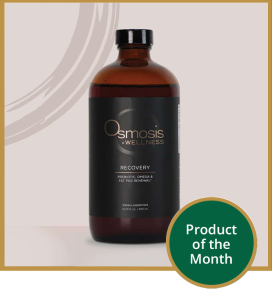Platelet-rich plasma (PRP) is a skin treatment in which a medical provider takes the patient’s blood and injects it into the target area to rejuvenate the skin. Cosmetic professionals often use it in combination with other compatible treatments, such as microneedling, to enhance the results.
Lately, PRP has been showing promise as a natural solution for hair loss, helping to reverse the condition and stimulate new hair growth.
This article explains how PRP for hair loss works, what types of hair loss typically respond to treatment, and how to maintain the results.

What Is PRP Hair Treatment?
PRP for hair loss is a novel treatment that uses concentrated platelets – cells in blood plasma – to regenerate hair follicles and stimulate new hair growth. Platelets are rich in growth factors and have powerful wound healing and tissue regrowth potential.
Who Is a Good Candidate for PRP Hair Treatment?
The candidates for PRP hair treatment are typically men and women with androgenetic alopecia. The condition leads to thinning hair in women and baldness in men. The treatment is the most effective when patients seek early help, experiencing hair loss up to five years before the treatment. PRP usually doesn't work for patients who've had the condition longer, resulting in thin, constricted follicles. Scientists still don’t know if PRP can help other hair loss conditions, such as stress-related, autoimmune-related, or scarring hair loss.
What Can You Expect During the Procedure?
PRP for hair loss is a three-step procedure.
1. The medical provider takes a small sample of the patient’s blood from their arm and puts it in a machine called a centrifuge.
2. The centrifuge spins rapidly, separating platelet-rich plasma from other blood components.
3. The medical provider extracts 3-6 ml of PRP from the sample and injects it into the areas on the patient’s scalp with receding hair.
Before injecting PRP, medical providers usually inject local anesthesia into the patient’s scalp to minimize pain and discomfort.
The procedure takes 30-60 minutes.
PRP Hair Treatment Results
PRP is not a permanent hair loss solution. Most patients need an initial set of three sessions spaced four to six weeks apart to see results and maintenance sessions every three to six months.
In most cases, the treatment stimulates the growth phase of the hair cycle, increasing hair count and thickness. Patients first notice decreased shedding, followed by increased hair growth.
However, there is no standard protocol for PRP for hair loss, so results vary from patient to patient, depending on the medical provider’s injection technique, PRP preparation, and session intervals.
PRP Hair Treatment Side Effects
PRP for hair loss involves using the patient’s blood, so there is no risk of communal diseases. Clinical research and patient experience show the treatment is safe when performed by experienced medical providers.
However, all injections and anesthesia carry rare potential risks, including:
- Pain at the injection site
- Blood vessel injury
- Nerve damage
- Infection
- Temporary bleeding at the injection site
- Scar tissue at the injection site
- Swelling
- Redness
- Itching
- Headaches
- Muscle aches
- Confusion
- Bladder control issues
PRP Hair Treatment Aftercare
Patients can resume most of their regular daily activities after PRP for hair loss but should refrain from the following for 24 hours:
- Strenuous physical activity
- Drinking alcohol
- Hair coloring
- Hair blow-drying
Patients who experience pain or bruising can apply ice packs or take a pain reliever such as Tylenol. These side effects are usually mild and disappear within a week.
Who Should Avoid PRP Hair Treatment?
During the initial consultation, the medical provider discusses the patient’s aesthetic goals, examines their scalp, and evaluates their medical history to determine if the treatment is safe for them.
Some medical conditions and medications increase the risk of severe side effects from the PRP treatment, and doctors advise those patients to try other options for hair regrowth.
Patients with the following health issues should avoid PRP for hair loss:
- History of bleeding disorders
- Autoimmune diseases
- History of alcohol or drug abuse
- Scalp infection
- Chronic liver disease
- Cancer
- Thyroid disease
- Hemodynamic instability
- Hypofibrinogenemia
- Metabolic disorder
- Platelet dysfunction syndrome
Also, patients who take blood thinners may be rejected for treatment. Make sure to disclose information about all medications you are taking, including supplements, to ensure they don’t increase the risk of severe side effects.
PRP Hair Treatment Cost
At Vibrant Skin Bar, PRP for hair loss costs $750.
It includes a consultation, a thorough examination of your scalp and hair, blood chemistry lab orders when indicated, and one PRP session to address hair loss or thinning hair. The total treatment cost depends on how many sessions you need.
Conclusion
PRP for hair loss is a promising new treatment for receding and thinning hair. Patients particularly like the natural component of the treatment, which involves injecting their own blood into the target area.
Though PRP is not a permanent hair loss solution, it provides a high success rate and allows patients to avoid more aggressive treatment options, such as surgery and potent medications.
Next, learn more about Nutrafol and does Nutrafol work for hair loss.




